Where shall I place my dehumidifier around the house?
We get lots of questions asking us how to use a dehumidifier and where best to put it around the house. It’s best to place it somewhere central in the house, being sure to think about where your sources of moisture are. Moisture problems like damp and mould are typically likely to arise in the bathroom, where showers and baths create lots of steam. And so, it is best to position your dehumidifier on the landing. Here, the dehumidifier will create a dry spot; and as long as internal doors are kept open, any moisture from the bathroom or anywhere else in the house, will migrate here. The dehumidifier will draw in the moisture, turning it into water.
If the unit is set up in a relatively permanent position and if you do not wish to empty the tank manually, you could set up your dehumidifier with continuous drainage. When using continuous drainage via a hose on its own, the water is drained from the dehumidifier via gravity. This means the hose must go downhill, without any kinks or blockages, to allow the water to flow. Ensure the end of the hose is lower than the drainage port and the water can flow downwards into a sink or drain. Because of this, it can be best to place the dehumidifier on the kitchen side (to give it the height), next to a sink, so the hose can drain the water straight into the sink and down the drain.
If the hose can only go uphill, then you could install a water pump. If you want to learn how to install this, you can watch our YouTube video.
The beauty of Arete®
In general, dehumidifiers need to be about 30 cm away from the wall. And if positioned in a hallway, landing, or a flat or small house, that means it’ll be in the way. Very annoying.
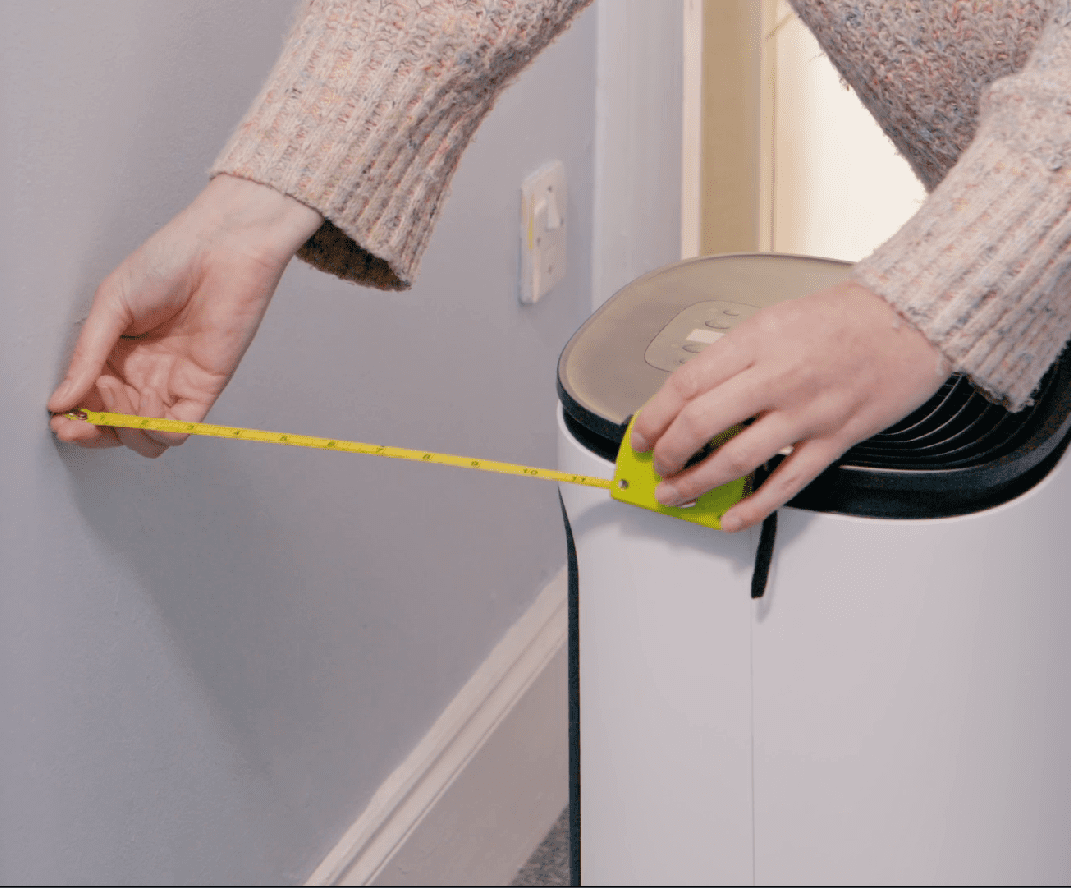
But that’s the beauty of Arete®, as this is the only dehumidifier that solves that problem. Designed here in the UK, this machine has been made with British and European customers in mind. We know that you’ll probably place your dehumidifier in a landing or a hallway, so we have worked hard to engineer an appliance that doesn’t take up unnecessary space and becomes a nuisance to own. With Arete®, you can put it right up against the wall, and it will still do the job.
What target relative humidity should we set our dehumidifier to?
The optimum humidity for UK homes is between 50%rh and 55%rh. This is dry enough to remove condensation and prevent damp and mould issues, but not too dry that it would cause other issues such as dry, itchy skin and sore throats.
In colder months, some people may find this target isn’t low enough to reduce condensation on their windows. In these circumstances, the target humidity for your dehumidifier to reach can be reduced to around 40%rh.
But in general terms, aim for 55%rh. That’s what museums use when they’re looking after their collections; so, if it’s good enough for museums, it’s good enough for us.
Can I move my dehumidifier from room to room?
You can. However, it is best to keep your dehumidifier in one place. This is because the dehumidifier brings moisture towards itself, creating a dry spot in the process. Let it do the job by leaving it in one place, and leaving all internal doors open. Get used to bringing the laundry to the dehumidifier, rather than moving the dehumidifier to the laundry.
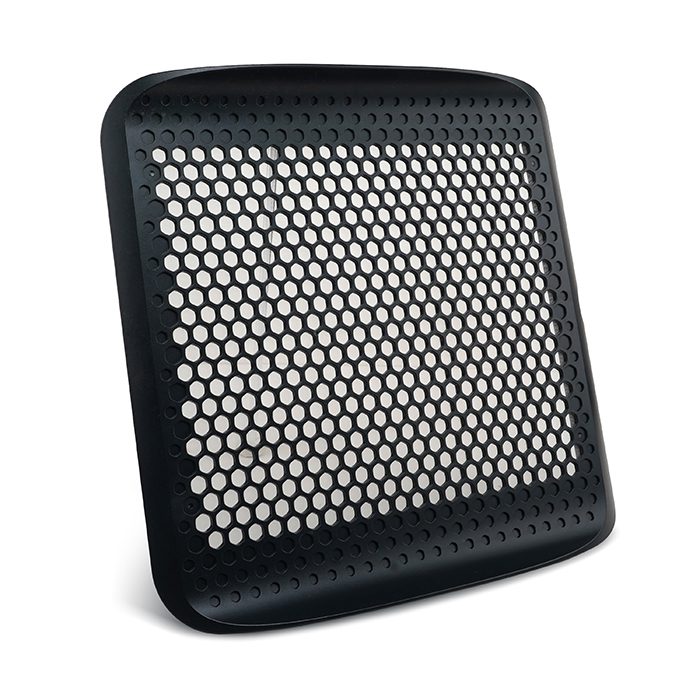

What about the filter?
The dust filter is very important as it stops dust and dirt from getting into the machine. It is extremely important to clean the filter on a regular basis. Without regular cleaning, dirt and dust will build up over time and stop air passing through it. When the air can’t pass through it, the machine starts to use more energy, so your electricity bill will go up. It will also cause the machine to make more noise. So it’s in your vested interest just to keep the filter clean.
If you’ve got a HEPA filter, when it turns from white to dark gray, it’s ready to be disposed of in the general waste. It may not sound very environmentally friendly, but the filter collects all sorts of bacteria, which no one wants entering the recycling system. To deal with it correctly, it’s best to dispose of it in the general waste.
Save money on your heating bill with a dehumidifier
Having a dehumidifier in the home turns all damp air into dry air, which is makes it far easier for your central heating system to heat your home. This is because all of the extra moisture in the air needs to be warmed up before you can start to feel warm.
A dehumidifier keeps the relative humidity in the house at a sensible level. It’s not too dry that it will cause you any problems, but at a level where you won’t get issues of damp mold and condensation and one that makes your heating system more energy efficient.
With a dehumidifier, you’ll start turning down your thermostat, and you’ll save money on your heating bill. Yet another benefit that comes from owning a dehumidifier.
We’d love to hear your ideas and questions, so please feel free to share them with us by leaving a message in the comment section below.
Products featured:

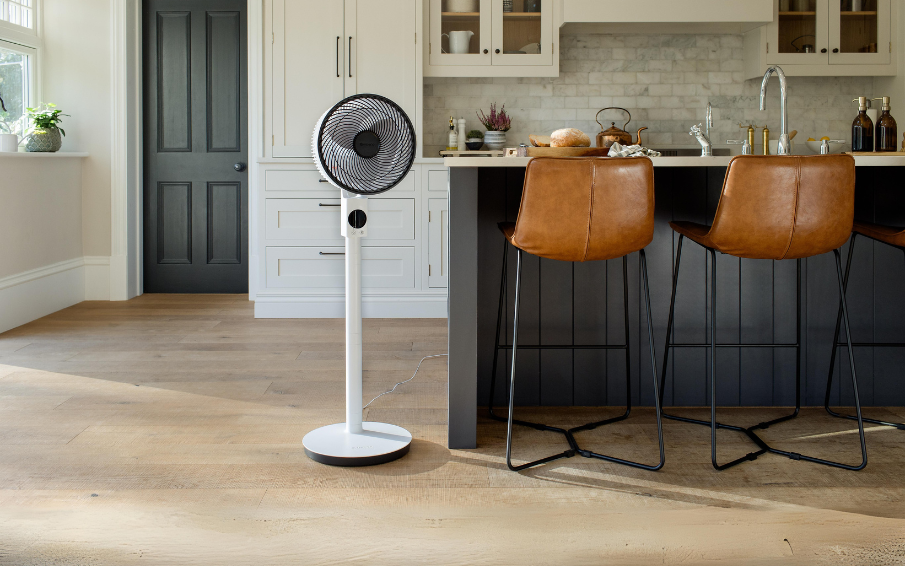

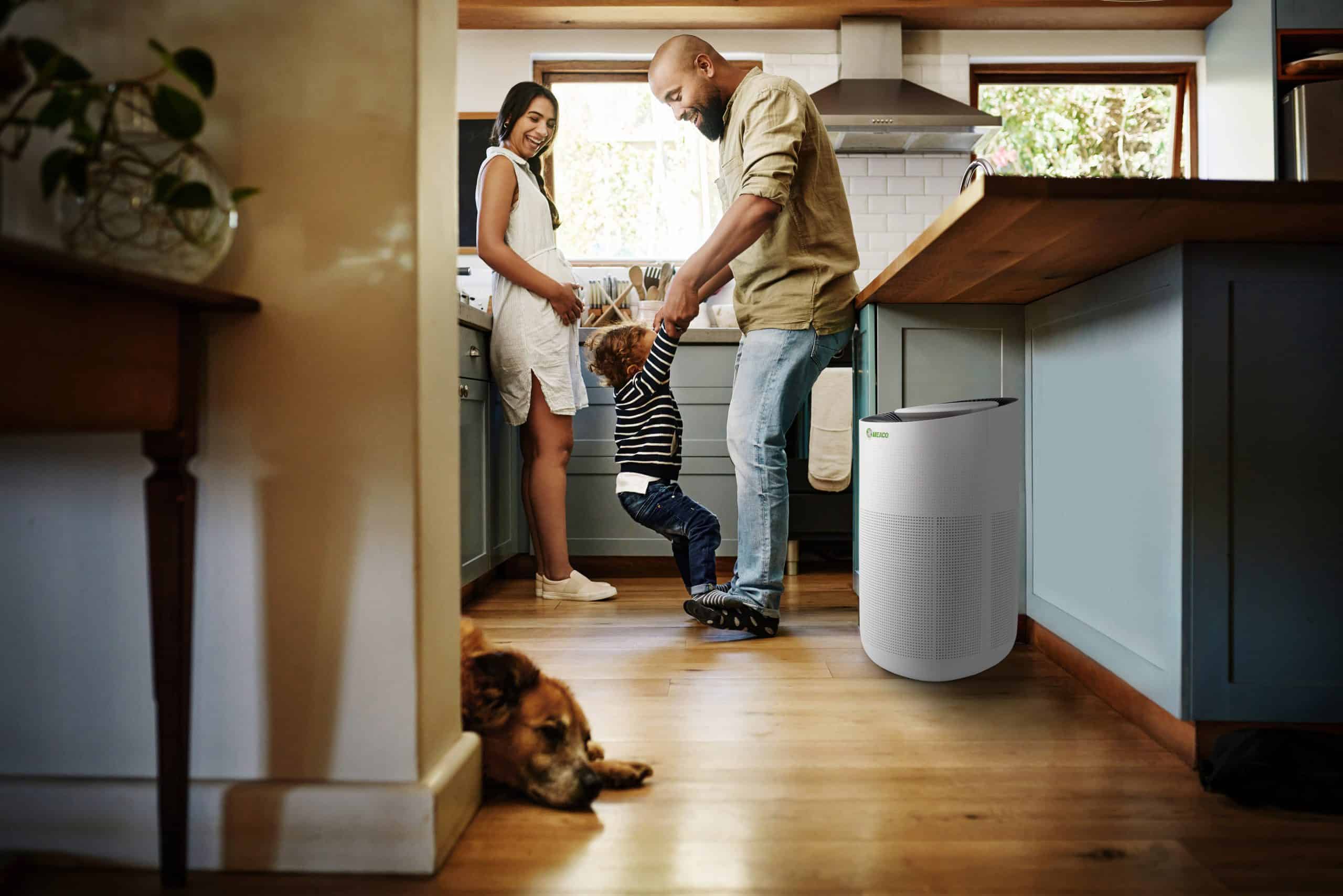

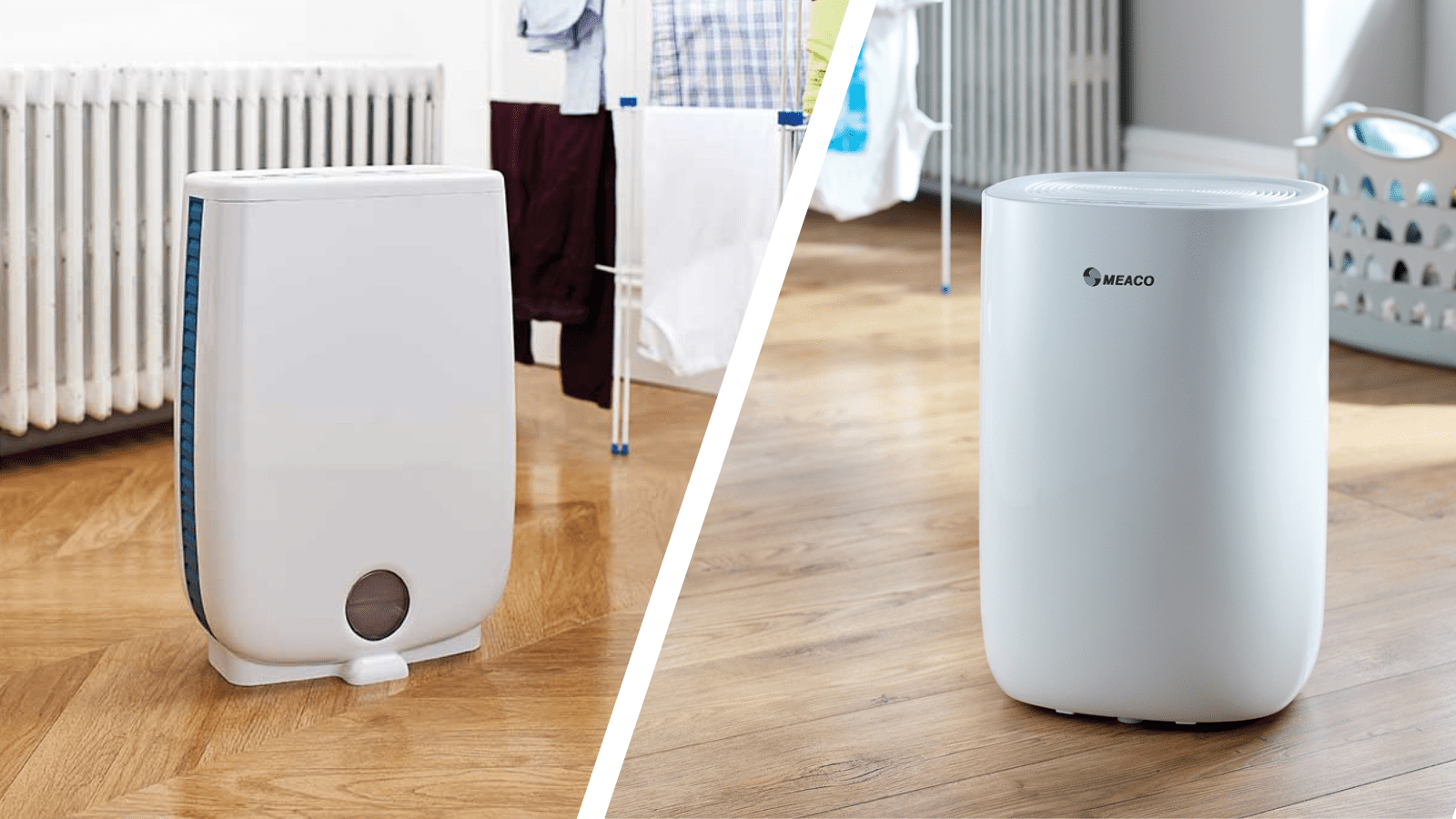


12 Responses
Can I run it without the filter in order to save energy and reduce noise? Would this harm the machine?
Peter,
Thank you for your question, yes you can use the machine without the HEPA filter, doing so causes no harm to the machine, it will only act as a dehumidifier.
When using only the dust filter it’s best to maintain it’s health and prevent blockages which will lead to a more noisy machine, clean every 2 weeks.
Please follow the cleaning instructions provided in the user manual.
Kind regards,
Omar@Meaco.
How do I register the warranty on my Meaco 12L Low Energy dehumidifier?
Thank you for your recent purchase,
To register your free warranty, please visit: https://www.meaco.com/pages/register-your-warranty
I hope this helps,
Omar@Meaco.
Can I place my dehumidifier on my landing to deal with mold issues in bedrooms
Thank you for your enquiry,
The answer is yes, please read below for more information:
Moisture problems like damp and mould are typically likely to arise in the bathroom, where showers and baths create lots of steam. And so, it is best to position your dehumidifier on the landing. Here, the dehumidifier will create a dry spot; and as long as internal doors are kept open, any moisture from the bathroom or anywhere else in the house, will migrate here. The dehumidifier will draw in the moisture, turning it into water.
Kind regards,
Omar@Meaco
Will the dehumidifier draw moisture from a toilet bowl rather than from the bathroom if the machine is running on the landing?
Thank you for your enquiry,
Please note your dehumidifier will not evaporate the water from the toilet bowl.
Hope that helps,
Omar@Meaco
If I leave my dehumidifer in the hallway all the time , is it ok to put the wet washing on the clothes airer in there too?
Thank you for your question, the simple answer yes, you can do so, but please also read on, below to find out the best practice principle for an efficient way of drying laundry.
In order to dry washing efficiently you should position a Laundry Drying dehumidifier next to the washing in a small room (the kitchen perhaps) and close the door. The dehumidifier will dry the air within the kitchen to around 35%rh and the washing will release its moisture from the laundry to be in equilibrium with the air in the room. The water that is released into the air will be collected by the dehumidifier and will not be able to travel around the property and will therefore not be able to create damp issues. If you are able to position the washing so that the dry air coming out of the dehumidifier hits the washing then it will dry even faster (think windy day outside and washing on the line).
I hope this helps.
Omar@Meaco.
I need one in my garage and out building and they both get cold as the temp.changes to cold and my out side shed gets damp when it rains .Should I still
run them in the winter ?
Thank you for your enquiry, based on your information a desiccant dehumidifier would be a good fit, working well down to 1°c, see any of our DD8L models.
I hope this helps.
Omar@Meaco